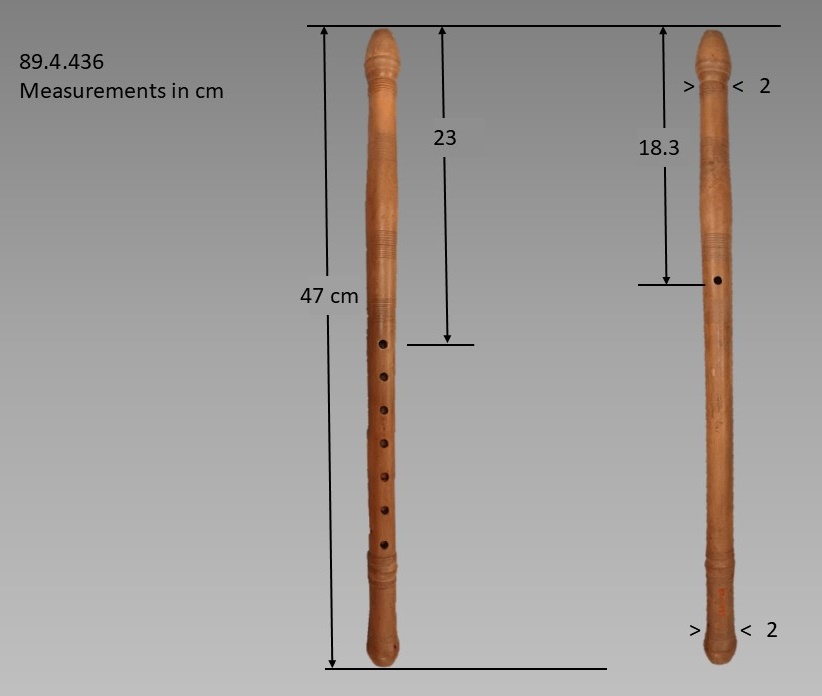Kaval
Not on view
The kaval while similar to the Syrian nāy is found in southeastern Europe and Turkey. Obvious differences between the two endblown flutes are the material used and the arrangement and number of fingerholes. This boxwood flute, used as a pastoral instrument, has been turned on a lathe. The term kaval is also used for duct flutes.
The names of musical instruments often reveal origin, context, or musical function. In Europe, North Africa, and Asia where contact with Middle Eastern culture occurred, variations of Arabic and Persian terms for instruments are widespread. Usually, related names refer to similar instruments; however, this is not always true. Among these "floating terms" are the names zūrna, rabāb, kāmanja, nāy, and dombak.
This image cannot be enlarged, viewed at full screen, or downloaded.
This artwork is meant to be viewed from right to left. Scroll left to view more.



.jpg)

